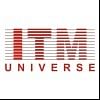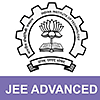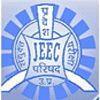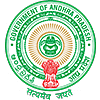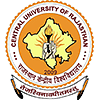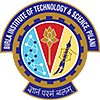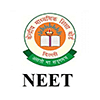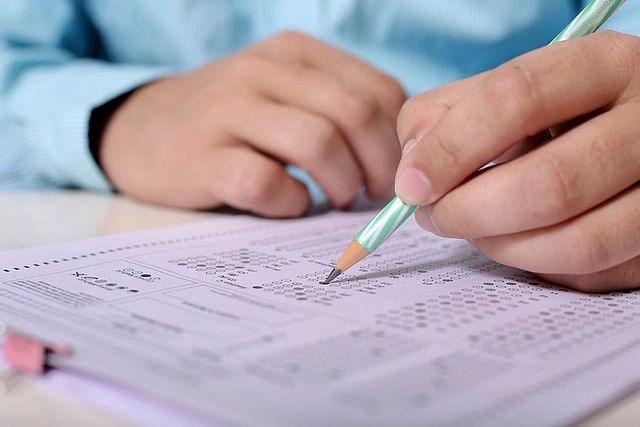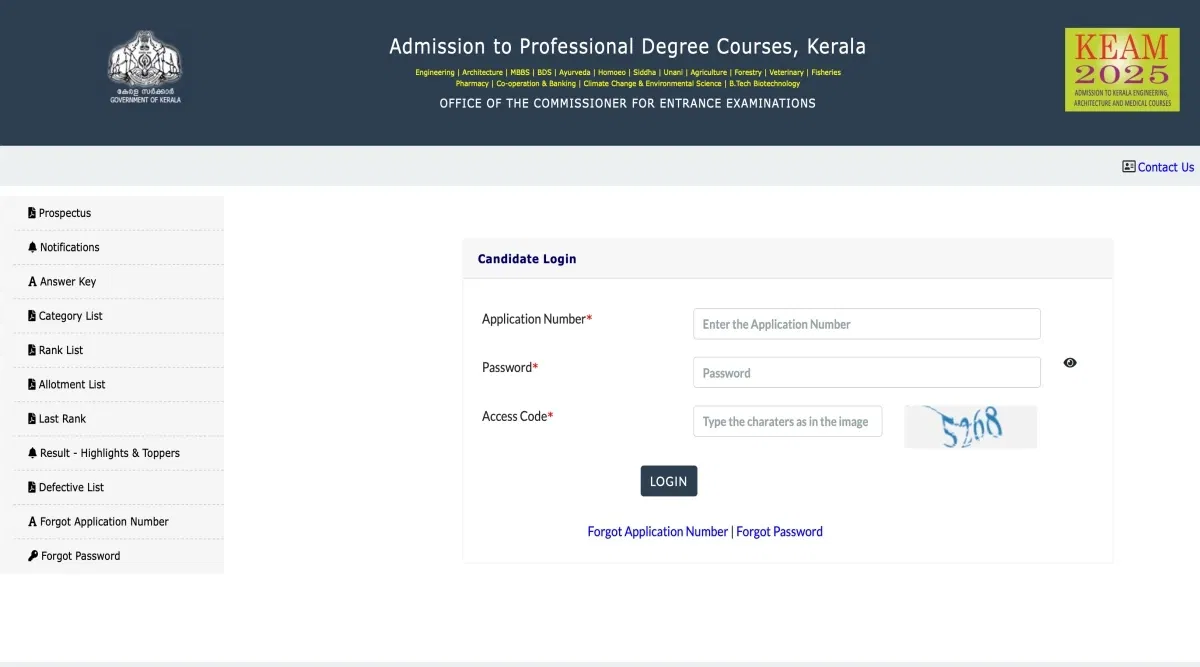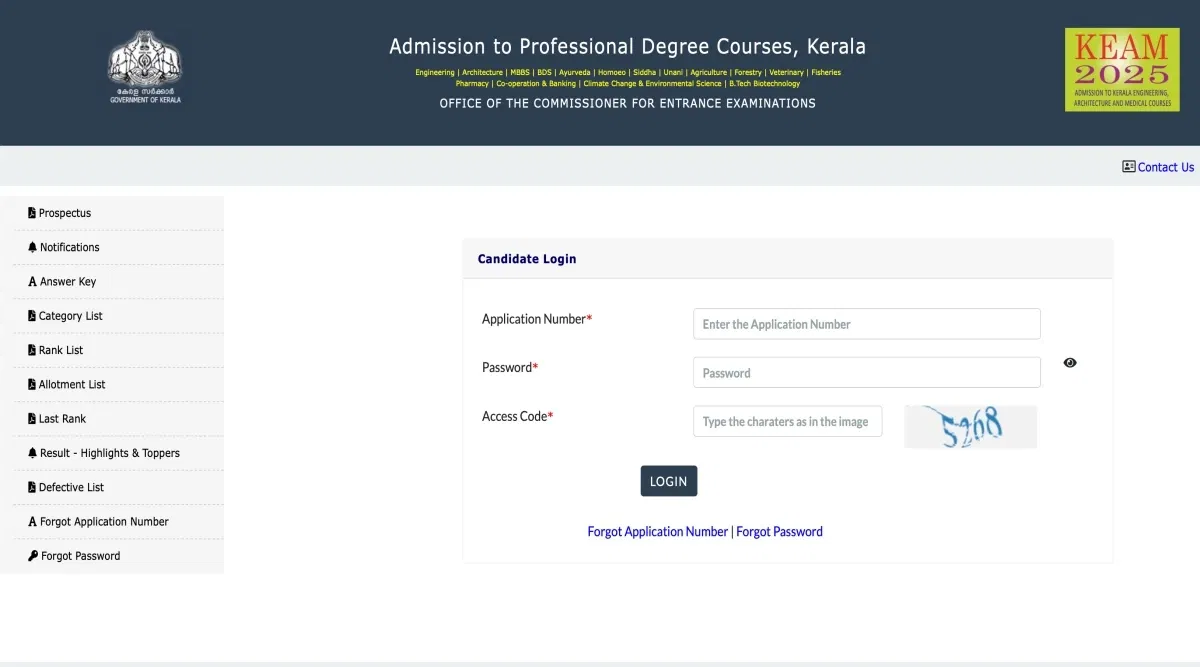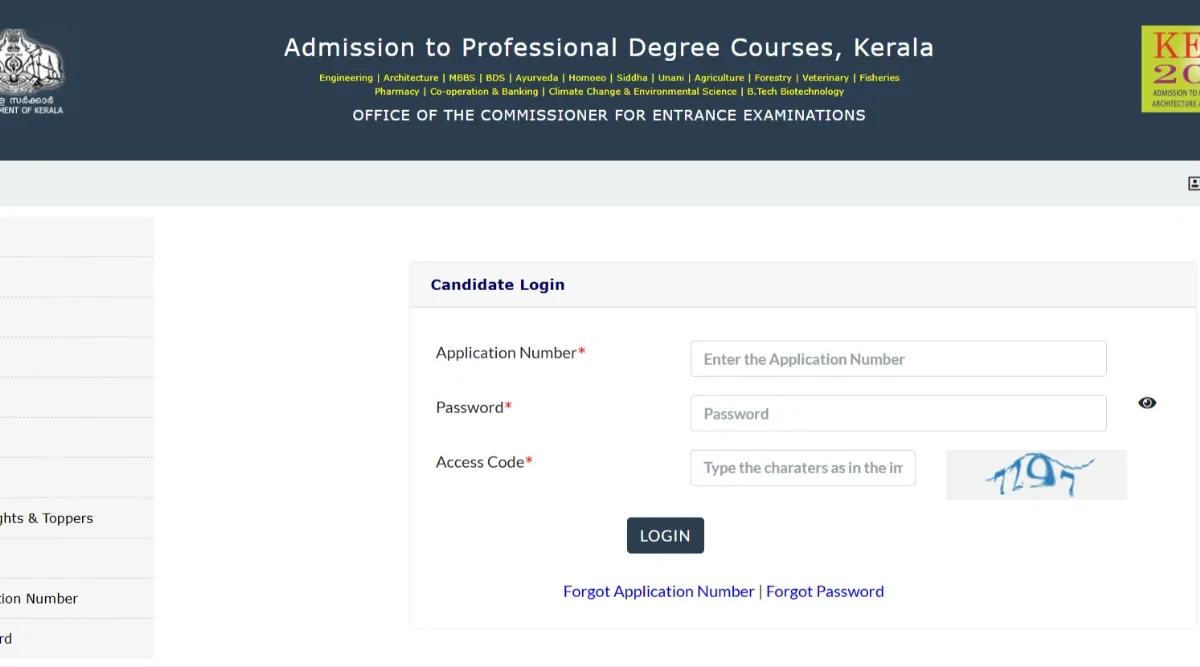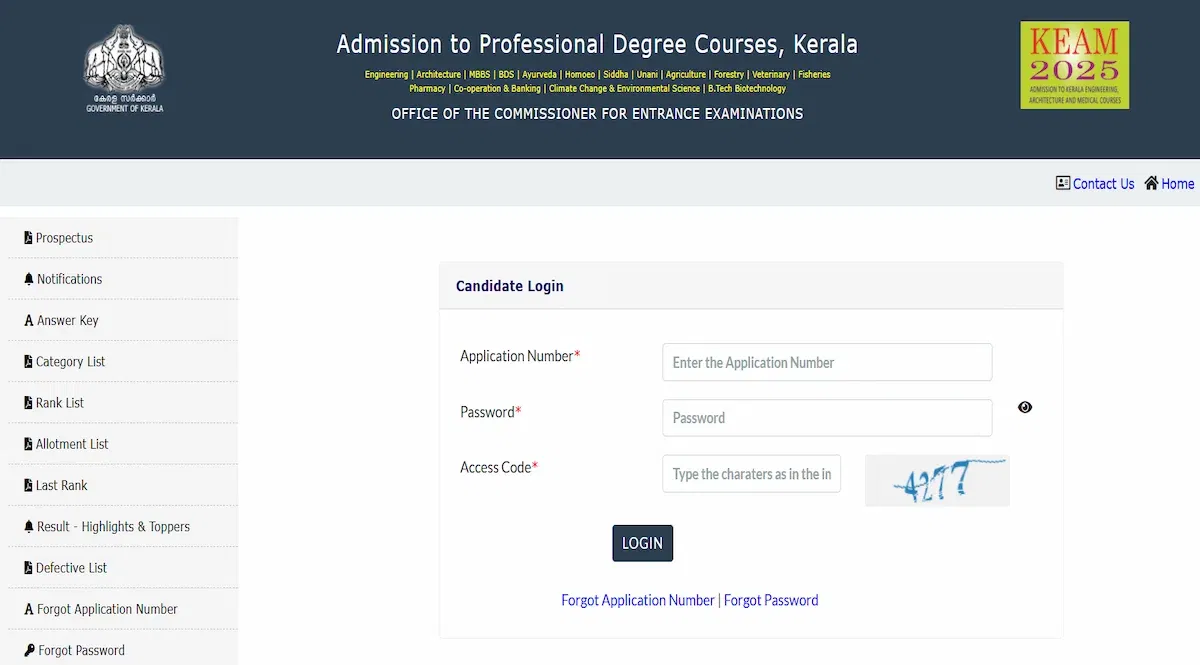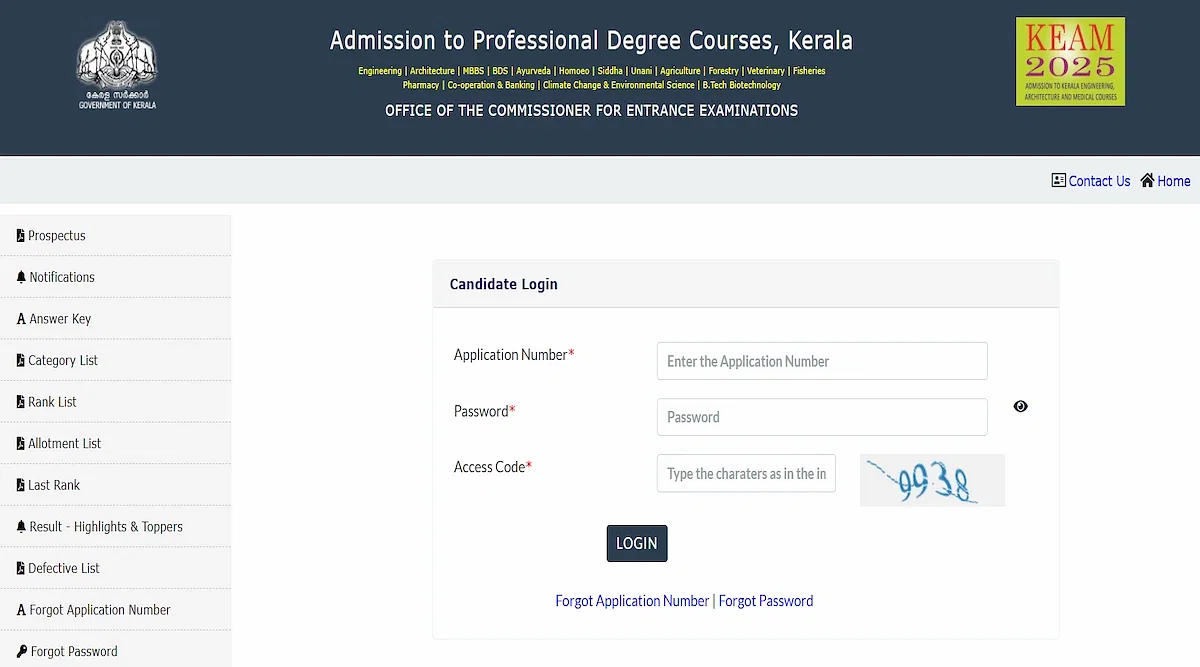
Table of Contents
KEAM syllabus 2025 has been set by the Commissioner of Entrance Examination (CEE), Kerala. KEAM 2025 syllabus for Physics, Chemistry, and Mathematics has been made available. Studying the KEAM syllabus PDF 2025 and exam pattern is crucial for effective preparation. For improved test results, candidates can also use KEAM question papers and key subjects as study helps.
| KEAM Exam Pattern 2025 | KEAM Exam Dates 2025 |
Candidates can check the KEAM 2025 syllabus pdf download at the website, cee.kerala.gov.in to get an overview of the topics and their distribution. It also helps candidates prepare well and plan for the syllabus of the KEAM exam 2025.
KEAM 2025 will have two sets of papers. Paper 1 includes Physics and Chemistry, and Paper 2 consists of Mathematics. The first paper is to be given by B.Pharm applicants, whereas the Engineering aspirants have to appear for both, Papers 1 and 2.
KEAM Syllabus 2025
The KEAM 2025 syllabus PDF includes important physics, chemistry, and maths courses. Candidates can consult the previous year's question papers for preparations and the KEAM subjects. Students can divide their study schedules between difficult, mediocre, and easy topics after downloading the KEAM syllabus 2025 pdf. To learn more about the KEAM 2025 syllabus, read the whole article.
Candidates must prepare for Class 11th and 12th Physics, Chemistry, and Mathematics. The in-depth KEAM 2025 syllabus PDF has been discussed on this page.
KEAM Syllabus 2025 for Physics
KEAM Syllabus 2025 consists of 120 objective-type questions on Paper I for the Physics and Chemistry sections and they have 150 minutes to complete. There are 480 total points assigned to Paper I. Questions from the themes listed below will be included in the KEAM Physics question paper.
KEAM Exam Subjects |
Topics |
|
Unit 1: Introduction and Measurement
|
Physics – Scope and excitement; Physics in relation to science, society and technology – inventions, names of scientists and their fields, Nobel prize winners and topics, current developments in physical sciences and related technology. Units for measurement – systems of units, S . I units, conversion from other systems to S.I units. Fundamental and derived units. Measurement of length, mass and time, least count in measuring instruments (eg. vernier callipers, screw gauge etc), Dimensional analysis and applications, the order of magnitude, accuracy and errors in measurement, random and instrumental errors, significant figures and rounding off principles. |
|
Unit 2: Description Of Motion In One Dimension
|
Objects in motion in one dimension – Motion in a straight line, uniform motion – its graphical representation and formulae; speed and velocity - instantaneous velocity; ideas of relative velocity with expressions and graphical representations; Uniformly accelerated motion, position-time graph, velocity, time graph, and formulae. Elementary ideas of calculus – differentiation and integration – applications to motion.
|
|
Unit 3: Description Of Motion In Two And Three Dimensions
|
Vectors and scalars, vectors in two and three dimensions, unit vector, addition and multiplication, resolution of vector in a plane, rectangular components, scalar and vector products. Motion in two dimensions – projectile motion, ideas of uniform circular motion, linear and angular velocity, the relation between centripetal acceleration and angular speed.
|
|
Unit 4: Laws Of Motion
|
Force and inertia, first law of motion, momentum, the second law of motion, forces in nature, impulse, third law of motion, conservation of linear momentum, examples of the variable mass situation, rocket propulsion, equilibrium of concurrent forces. Static and kinetic friction, laws of friction, rolling friction, lubrication. Inertial and non-inertial frames (elementary ideas); Dynamics of uniform circular motion – centripetal and centrifugal forces, examples: banking of curves and centrifuge. |
|
Unit 5: Work, Energy And Power
|
Work was done by a constant force and variable force, units of work – Energy – kinetic and potential forms, power, work-energy theorem. Elastic and inelastic collisions in one and two dimensions. Gravitational potential energy and its conversion to kinetic energy, spring constant, the potential energy of a spring, Different forms of energy, mass-energy equivalence (elementary ideas), conservation of energy, conservative and non-conservative forces. |
|
Unit 6: Motion Of System Of Particles And Rigid Body Rotation
|
Centre of mass of a two-particle system, generalisation to N particles, momentum conservation and center of mass motion, applications to some familiar systems, centre of mass of the rigid body. Moment of a force, torque, angular momentum, physical meaning of angular momentum, conservation of angular momentum with some examples, eg. planetary motion. Equilibrium of rigid bodies, rigid body rotation and equation of rotational motion, comparison of linear and rotational motions, a moment of inertia and its physical significance, the radius of gyration, parallel and perpendicular axes theorems (statements only), a moment of inertia of circular ring and disc, cylinder rolling without slipping. |
|
Unit 7: Gravitation
|
The universal law of gravitation, gravitational constant (G) and acceleration due to gravity (g), weight and gravitation, a variation of g with altitude, latitude, depth and rotation of the earth. Mass of earth, gravitational potential energy near the surface of the earth, gravitational potential, escape velocity, orbital velocity of satellite, weightlessness, the motion of geostationary and polar satellites, statement of Kepler’s laws of planetary motion, proof of second and third laws, the relation between inertial and gravitational masses. |
|
Unit 8: Mechanics of Solids And Fluids
|
Solids: Hooke’s law, stress-strain relationships, Young's modulus, bulk modulus, shear modulus of rigidity, some practical examples. Fluids: Pressure due to the fluid column, Pascal’s law and its applications (hydraulic lift and hydraulic brakes), effect of gravity on fluid pressure, Buoyancy, laws of floatation and Archimedes principles, atmospheric pressure. Surface energy and surface tension, contact angle, examples of drops and babbles, capillary rise, detergents and surface tension, viscosity, sphere falling through a liquid column, Stokes law, streamline flow, Reynold’s number, the equation of continuity, Bernoulli’s theorem and applications.
|
|
Unit 9: Heat And Thermodynamics
|
Kinetic theory of gases, assumptions, the concept of pressure, kinetic energy and temperature, mean-rms and most probable speed, degrees of freedom, statement of the law of equipartition of energy, the concept of mean free path and Avogadro's’ number Thermal equilibrium and temperatures, zeroth law of thermodynamics, Heat-work and internal energy, Thermal expansion – thermometry. The first law of thermodynamics and examples, specific heat, specific heat of gases at constant volume and constant pressure, the specific heat of solids, Dulong and Petit’s law Thermodynamical variables and equation of state, phase diagrams, ideal gas equation, isothermal and adiabatic processes, reversible and irreversible processes, Carnot engines, refrigerators and heat pumps, efficiency and coefficient performance of heat engines, ideas of the second law of thermodynamics with practical applications. Thermal radiation – Stefan-Boltzmann law, Newton’s law of cooling. |
|
Unit 10: Oscillations
|
Periodic motion – period, frequency, displacement as a function of time and periodic functions; Simple harmonic motion (S.H.M) and its equation, uniform circular motion and simple harmonic motion, oscillations of a spring, restoring force and force constant, energy in simple harmonic motion, kinetic and potential energies, simple pendulum – derivation of expression for the period; forced and damped oscillations and resonance (qualitative ideas only), coupled oscillations. |
|
Unit 11: Waves
|
Longitudinal and transverse waves, wave motion, displacement relation for a progressive wave, the speed of a travelling wave, principle of superposition of waves, reflection of waves, standing waves in strings and pipes, fundamental mode and harmonics, beats, Doppler effect of sound with applications |
|
Unit 12: Electrostatics
|
Frictional electricity; Properties of electric charges - conservation, additivity and quantisation. Coulomb’s law – Forces between two point electric charges, Forces between multiple electric charges; Superposition principle and continuous charge distribution. Electric field and its physical significance, electric field due to a point charge, electric field lines; Electric dipole, electric field due to a dipole and behaviour and dipole in a uniform electric field. Electric potential-physical meaning, potential difference, electric potential due to a point charge, a dipole and system of charges; Equipotential surfaces, Electrical potential energy of a system of point charges, electric dipoles in an electrostatic field. Electric flux, statement of Gauss’ theorem-its application to find field due to an infinitely long straight wire, uniformly charged infinite plane sheet and uniformly charged thin spherical shell. Conductors and insulatorspresence of free charges and bound charges; Dielectrics and electric polarization, general concept of a capacitor and capacitance, a combination of capacitors in series and in parallel, the energy stored in a capacitor, the capacitance of a parallel plate capacitor with and without dielectric medium between the plates, Van de Graff generator. |
|
Unit 13: Current Electricity
|
Electric current, flow of electric charges in a metallic conductor, drift velocity and mobility, their relation with electric current; Ohm’s law, electrical resistance, V-I characteristics, limitations of Ohm’s law, electrical resistivity and conductivity, classification of materials in terms of conductivity; Superconductivity (elementary idea); Carbon resistors, colour code for carbon resistors; combination of resistances - series and parallel. Temperature dependence of resistance. The internal resistance of a cell, Potential difference and emf of a cell, combination of cells in series and parallel. Kirchoff’s lawsillustration by simple applications, Wheatstone bridge and its applications, Meter bridge. Potentiometer -principle and applications to measure potential difference, comparison of emf of two cells and determination of internal resistance of a cell. Electric power, thermal effects of current and Joule’s law; Chemical effects of current, Faraday’s laws of electrolysis, Electro-chemical cells. |
|
Unit 14: Magnetic Effect of Current And Magnetism
|
Concept of a magnetic field, Oersted’s experiment, Biot-Savart’s law, magnetic field due to an infinitely long current carrying straight wire and a circular loop, Ampere’s circuital law and its applications to straight and toroidal solenoids. Force on a moving charge in a uniform magnetic field, cyclotron. Force on current carrying conductor and torque on current loop in magnetic fields, the force between two parallel current carrying conductors, the definition of the ampere. Moving coil galvanometer and its conversion into ammeter and voltmeter. Current loop as a magnetic dipole, magnetic moment, torque on a magnetic dipole in a uniform magnetic field, Lines of force in the magnetic field. Comparison of a bar magnet and solenoid. Earth’s magnetic field and magnetic elements, vibration magnetometer. Para, dia and ferromagnetic substances with examples. Electromagnets and permanent magnets. |
|
Unit 15: Electromagnetic Induction And Alternating Current
|
Electromagnetic induction, Faraday’s laws, Induced e.m.f. and current, Lenz’s law, Eddy currents, self and mutual inductance. Alternating current, peak and RMS value of alternating current/voltage, reactance and impedance, L.C. oscillations, LCR series circuit. (Phasor diagram), Resonant circuits and Q-factor; power in A.C. circuits, wattless current. AC generator and Transformer. |
|
Unit 16: Electromagnetic Waves
|
Properties of electromagnetic waves and Maxwell’s contributions (qualitative ideas), Hertz’s experiments, Electromagnetic spectrum (different regions and applications), propagation of electromagnetic waves in earth’s atmosphere. |
|
Unit 17: Optics
|
Reflection in mirrors, refraction of light, total internal reflection and its applications, spherical lenses, thin lens formula, lens maker’s formula; Magnification, Power of a lens, combination of thin lenses in contact; Refraction and dispersion of light due to a prism, Scattering of light, Blue colour of the sky and appearance of the sun at sunrise and sunset. Optical instruments, Compound microscope, astronomical telescope (refraction and reflection type) and their magnifying powers. Wavefront and Huygen’s principle. Reflection and refraction of plane wave at a plane surface using wave fronts (qualitative idea); Interference-Young’s double slit experiment and expression for fringe width, coherent sources and sustained interference of light; Diffraction due to a single slit, width of central maximum, difference between interference and diffraction, resolving power of microscope and telescope; Polarisation, plane polarised light, Brewster’s law, Use of polarised light and Polaroids. |
|
Unit 18: Dual Nature Of Matter And Radiations
|
Photoelectric effect, Einstein photoelectric equation - particle nature light, photo-cell, Matter waves-wave nature of particles. De Broglie relation, Davisson and Germer experiment. |
|
Unit 19: Atomic Nucleus
|
Alpha particle scattering experiment, size of the nucleus - composition of the nucleus - protons and neutrons. Nuclear instability - Radioactivity-Alpha, Beta and Gamma particle/rays and their properties, radioactive decay laws, Simple explanation of __-decay, _-decay and __decay; mass-energy relation, mass defect, Binding energy per nucleon and its variation with mass number. Nature of nuclear forces, nuclear reactions, nuclear fission, nuclear reactors and their uses; nuclear fusion, elementary ideas of energy production in stars. |
|
Unit 20: Solids and Semiconductor Devices
|
Energy bands in solids (qualitative ideas only), difference between metals, insulators and semiconductors using band theory; Intrinsic and extrinsic semiconductors, p-n junction, Semi-conductor diode characteristics forward and reverse bias, diode as a rectifier, solar cell, photo-diode, Zener diode as a voltage regulator; Junction transistor, characteristics of a transistor; Transistor as an amplifier (common emitter configuration) and oscillator; Logic gates (OR, AND, NOT, NAND, NOR); Elementary ideas about integrated circuits. |
|
Unit 21: Principles Of Communications
|
Elementary idea of analogue and digital communication; Need for modulation, amplitude, frequency and pulse modulation; Elementary ideas about demodulation, Data transmission and retrieval, Fax and Modem.(basic principles) Space communications - Ground wave, space wave and skywave propagation, satellite communications. |
KEAM Syllabus 2025 for Chemistry
KEAM 2025 syllabus for Chemistry with topics are shown in the following table.
KEAM Exam Subjects |
Topics |
|
Unit 1: Basic Concepts and Atomic Structure
|
Laws of chemical combination: Law of conservation of mass. Law of definite proportion. Law of multiple proportions. Gay-Lussac’s law of combining volumes. Dalton’s atomic theory. Mole concept. Atomic, molecular and molar masses. Chemical Equations. Balancing and calculation based on chemical equations. Atomic structure: Fundamental particles. Rutherford's model of an atom. Nature of electromagnetic radiation. The emission spectrum of the hydrogen atom. Bohr model of the hydrogen atom. Drawbacks of Bohr model. Dual nature of matter and radiation. de Broglie relatio n. Uncertainty principle. Wave function (mention only). Atomic orbitals and their shapes (s, p and d orbitals only). Quantum numbers. Electronic configurations of elements. Pauli’s exclusion principle. Hund’s rule. Aufbau principle.
|
|
Unit 2: Bonding And Molecular Structure
|
|
|
Unit 3: States of Matter
|
|
|
Unit 4: Periodic Properties of Elements And Hydrogen
|
|
|
Unit 5: S-Block Elements and Principles of Metallurgy
|
|
|
Unit 6: P-Block Elements
|
|
|
Unit 7: D-Block and F-Block Elements
|
F-Block elements:
|
|
Unit 8: Thermodynamics
|
|
|
Unit 9: Chemical Equilibrium
|
|
|
Unit 10: Solutions
|
|
|
Unit 11: Redox Reactions and Electrochemistry
|
|
|
Unit 12: Chemical Kinetics
|
|
|
Unit 13: Surface Chemistry
|
|
|
Unit 14: Coordination Compounds and Organometallics
|
Ligand. Coordination number. IUPAC nomenclature of coordination compounds mononuclear, Isomerism in coordination compounds. Geometrical, optical and structural isomerism. Bonding in coordination compounds. Werner’s coordination theory. Valence bond approach. Hybridization and geometry. Magnetic properties of octahedral, tetrahedral and square planar complexes. Introduction to crystal field theory. Splitting of d orbitals in octahedral and tetrahedral fields (qualitative only). Importance of coordination compounds in qualitative analysis and biological systems such as chlorophyll, hemoglobin and vitamin B12 (structures not included).
|
|
Unit 15: Basic Principles, Purification and Characterization Of Organic Compounds
|
|
|
Unit 16: Hydrocarbons
|
Classification of hydrocarbons.
|
|
Unit 17: Organic Reaction Mechanism
|
|
|
Unit 18: Stereochemistry
|
Stereoisomerism: Geometrical isomerism and optical isomerism. Specific rotation. Chirality and chiral objects. Chiral molecules. Configuration and Fischer projections. Asymmetric carbon. Elements of symmetry. Compounds containing one chiral center. Enantiomers. Racemic form. Racemization. Compounds containing two chiral centers. Diastereo isomers. Meso form. Resolution.
|
|
Unit 19: Organic Compounds With Functional Groups Containing Halogens
|
|
|
UNIT 20: Organic Compounds with Functional Groups Containing Oxygen
|
|
|
Unit 21: Organic Compounds With Functional Groups Containing Nitrogen Amines
|
|
|
Unit 22: Polymers and Biomolecules
|
|
|
Unit 23: Environmental Chemistry and Chemistry In Everyday Life
|
|
KEAM Syllabus 2025 for Mathematics
KEAM syllabus PDF 2025 consists of 120 questions in Paper II of the Mathematics section, which must be answered in 150 minutes. A total of 480 marks will be assigned to the exam questions. The math portion of the KEAM exam will include questions from the following subjects.
|
KEAM Exam Subjects |
Topics |
|
Unit 1: Algebra
|
|
|
Unit 2: Trigonometry
|
Degree measures and Radian measure of positive and negative angles; the relation between degree measure and radian measure, definition of trigonometric functions with the help of a unit circle, periodic functions, the concept of periodicity of trigonometric functions, value of trigonometric functions of x trigonometric functions of sum and difference of numbers. Conditional identities for the angles of a triangle, solution of trigonometric equations of the type Sinx= Sina; Cos x= Cos a; Tanx= Tana, and equations reducible to these forms. Inverse trigonometric functions: Simple problems Graph of the following trigonometric functions;y = Sin xy=Cos xy=Tan xy=a Sinxy = aCos xy =aSin bxy=a Cos bx. |
|
Unit 3: Geometry
|
|
|
Unit 4: Statistics
|
Statistics and probability Mean deviation for ungrouped data, variance for grouped an ungrouped data, standard deviation. Random experiments and sample space, Events as subset of a sample space, occurrence of an event, sure and impossible events, Exhaustive events, Algebra of events, Meaning of equality likely outcomes, mutually exclusive events. Probability of an event; Theorems on probability; Addition rule, Multiplication rule, Independent experiments and events. Finding P (A or B), P (A and B), random variables, Probability distribution of a random variable. |
|
Unit 5: Calculus
|
|
Important Topics in KEAM Syllabus 2025
Syllabus of KEAM 2025 contains all important topics for all three subjects.
Topics in KEAM Physics Syllabus
- Introduction & Measurement
- Description of Motion in One Dimension
- Description of Motion in Two & Three Dimension
- Laws of Motion
- Work, Energy & Power
- The motion of System of Particles & Rigid Body Rotation
- Gravitation
- Mechanics of Solids & Fluids
- Heat & Thermodynamics
- Oscillations
- Waves
- Electrostatics
- Optics
- Solids & Semiconductor Devices
- Current Electricity
Topics in KEAM Chemistry Syllabus
- Basic Concepts and Atomic Structure
- Block Elements
- States of Matter
- Bonding and Molecular Structure
- Periodic Properties of Elements & Hydrogen
- Basics Principles, Purification & Characterization of Organic Compounds
- Hydrocarbons
- Coordination Compounds & Organometallics
Topics in KEAM Mathematics Syllabus
- Sets, Relation & Functions
- Complex Numbers
- Quadratic Equations
- Linear Inequations
- 3D Geometry
- Differential Equations
- Application of Derivatives
- Indefinite Integrals
- Lines & Family of Lines
- Mathematical Logic & Boolean Algebra
- Trigonometric Functions & Inverse Trigonometric Functions
Also Read:
KEAM Syllabus 2025 Books
KEAM subject syllabus has a variety of books to prepare for the exam.
Best Books for Physics
Book Name |
Author |
|
Concepts of Physics I & II |
H. C Verma |
|
Objective Physics Vol. I & II |
Arihant Publications |
Best Books for Chemistry
Book Name |
Author |
|
Organic Chemistry |
O. P Tandon |
|
Numerical Chemistry |
P. Bahadur |
Best Books for Mathematics
Book Name |
Author |
|
Mathematics XI & XII |
R. D Sharma |
|
Problems in Calculus in One Variable |
I. A Maron |
KEAM 2025 Subject Combination for Courses Offered
The subjects that candidates taking the KEAM 2025 exam will be tested on as per the chosen course have been tabulated below.
| Course | Subjects |
| KEAM Pharmacy Syllabus | Physics, Chemistry |
| KEAM Syllabus for Engineering and Architecture | Physics, Chemistry, Mathematics |
KEAM Exam Pattern 2025
CEE will release exam pattern, and the KEAM prospectus will be on the KEAM 2025 official website. It will include various exam details like the exam mode, duration, marking scheme, number of questions, etc. KEAM aspirants are advised to check the exam pattern along with the syllabus to have good preparation for the entrance examination. Some important points related to KEAM exam pattern have been listed below.
- KEAM 2025 comprises two papers- Paper I and Paper II
- Questions for Paper I are set for- Physics and Chemistry, whereas Paper II will include questions from Mathematics only.
- KEAM chapter wise weightage 2025 includes the MCQs, with each question carrying 5 options to choose from, out of which one is the right answer.
- Each paper will carry 120 questions that have to be completed in 150 minutes.
- For every correct answer, 4 marks will be awarded, while incorrect answers will invite a penalty of a negative 1 mark.
Engineering Entrance Exams 2025
FAQs on KEAM Syllabus
Q: Who releases the KEAM 2025 syllabus?
KEAM Exam 2025 is published by the CEE (Commissioner of Entrance Examination). KEAM Syllabusis released on the official website by the authorities.
Q: What are the topics for the KEAM syllabus 2025?
There are 3 subjects in KEAM Exam 2025, Physics, Chemistry, and Mathematics. Maths will be of 300 marks with 75 questions, Physics is of 180 marks with 45 questions and Chemistry is of 120 marks with 30 questions.
Q: Where can KEAM syllabus PDF 2025 be found?
KEAM Syllabus 2025 can be found on the official website of CEE.
Q: When will KEAM Exam 2025 be conducted?
KEAM Exam 2025 is scheduled to be conducted on April 24, 2025 - April 28, 2025. The registration is ongoing and the last date to apply is March 10, 2025.
Q: Is the syllabus of KEAM 2025 and JEE the same?
While JEE is based on the national NCERT curriculum, KEAM will be solely based on the state of Kerala syllabus.
Q: What is the KEAM 2025 syllabus PDF?
CEE Kerala sets KEAM 2025 syllabus PDF. Physics, Chemistry, and Mathematics subjects are covered by the KEAM syllabus 2025. The KEAM curriculum is based on class 11 and 12 exams. Mathematics, Physics, and Chemistry will each carry a 5:3:2 weighting in KEAM 2025.
Q: Do I need to cover the entire KEAM syllabus 2025 PDF?
Yes, candidates must finish the entire KEAM syllabus to perform well on the test. Candidates must study the centre syllabus to be eligible for KEAM admission opportunities to top colleges.





